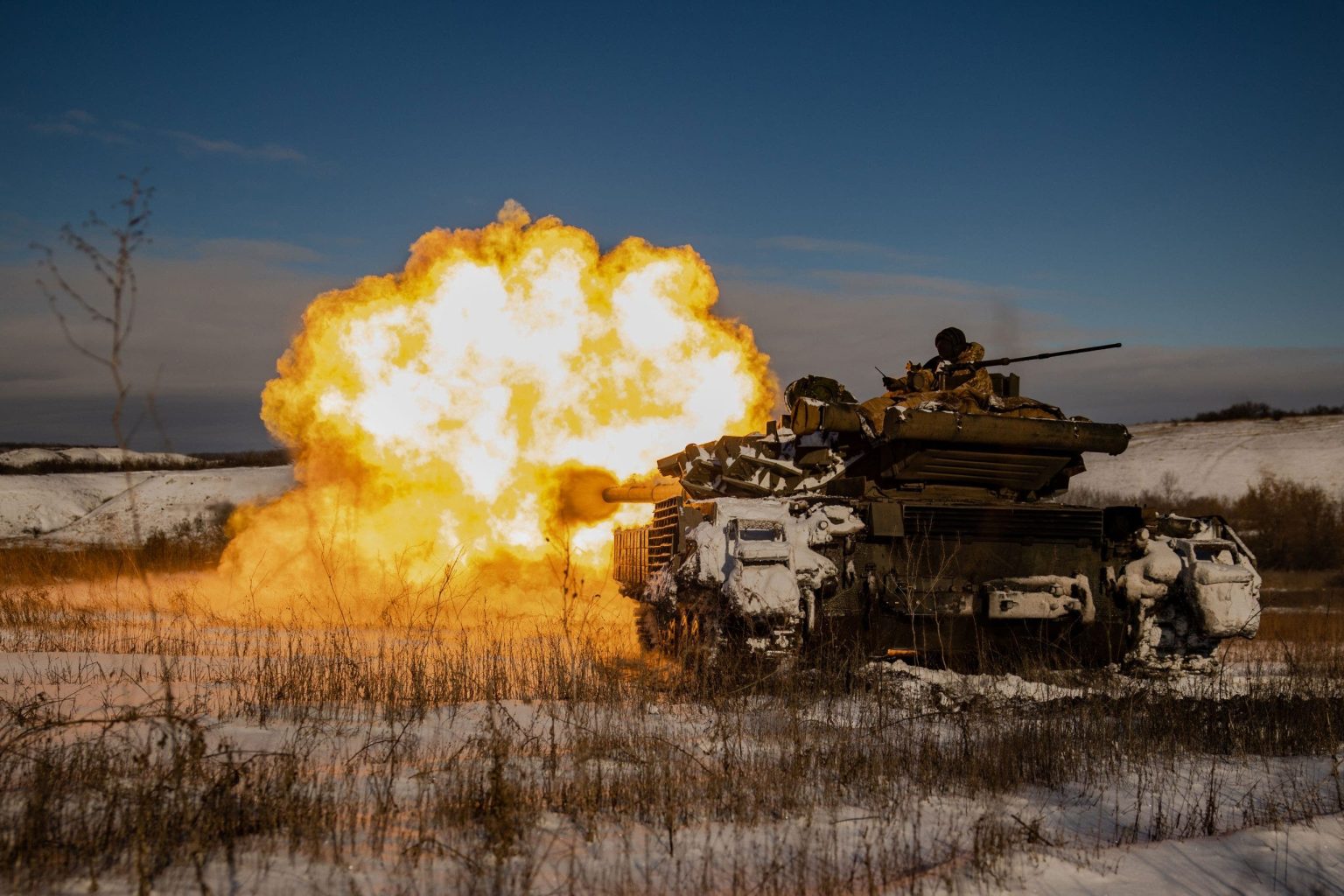Tensions remain high along the Ukraine-Russia border as Russian President Vladimir Putin has deployed approximately 50,000 troops to Ukraine’s northern border. This military buildup coincides with calls from Ukrainian President Volodymyr Zelenskyy for meaningful ceasefire negotiations amid a forecasted aggressive offensive from Russia in the coming months. Zelenskyy has stated his willingness to engage in talks with Putin, even suggesting a trilateral meeting that includes former U.S. President Donald Trump. However, the prospects for peace seem tenuous as both sides express dissatisfaction with ongoing military actions.
| Article Subheadings |
|---|
| 1) Troop Movements and Potential Offensives |
| 2) Commitment to Negotiations |
| 3) Recent Military Actions and Casualties |
| 4) Strategic Goals and Territorial Control |
| 5) The Future of Ceasefire Discussions |
Troop Movements and Potential Offensives
The recent escalation of Russian troop presence at the Ukrainian border has caused alarm among military analysts and officials across the globe. Reports indicate that around 50,000 Russian soldiers are positioned near the northern border of Ukraine, indicative of a planned large-scale offensive that may target regions such as Sumy. This offensive could push further into Ukrainian territory as part of Russia’s ongoing aggression since its invasion began in February 2022. Observers fear that this military buildup signifies a more aggressive strategy from Russia as summer approaches.
Commitment to Negotiations
Despite the rising tensions, President Zelenskyy has reiterated his commitment to engage in negotiations with Russia. He has publicly stated that he is willing to meet directly with Putin to discuss a potential ceasefire, adding that if Putin feels unprepared for a bilateral meeting, a trilateral meeting could involve former U.S. President Trump. This openness to dialogue is significant as it suggests a desire for a peaceful resolution despite the looming threats of military action. Zelenskyy’s diplomatic stance indicates a cautious optimism for resolving the conflict, though it is underpinned by a firm understanding of the risks involved.
Recent Military Actions and Casualties
The ongoing conflict has seen a spike in military engagements, leading to a severe humanitarian toll. Since a meeting in Turkey on May 16, Ukrainian officials report that Russian forces have launched over 120 missiles and utilized 1,500 drones, along with more than 2,500 guided bombs targeting Ukrainian cities. The impact of these assaults has been catastrophic; recent reports confirm at least 20 civilian casualties from a missile strike in Sumy. These alarming figures highlight the urgent need for a ceasefire and underscore the escalating nature of military tactics being employed by both sides.
Strategic Goals and Territorial Control
As Putin seeks to solidify a buffer zone along Ukraine’s northern territory, military analysts suggest that this could serve as leverage in any ceasefire negotiations. Russian forces have reportedly gained control of several Ukrainian villages that had previously been ebbed in what has been termed a “gray zone,” indicating a long-standing military contention. The creation of this buffer zone aligns with Russia’s strategic goals initiated back in 2024, yet the success of this maneuver relies heavily on the outcome of ongoing diplomatic negotiations. The Ukrainian government remains cautious about these developments, viewing them as another attempt by Russia to gain the upper hand in the conflict.
The Future of Ceasefire Discussions
Looking ahead, the prospect of resumed ceasefire discussions remains uncertain. After proposing a second round of talks in Istanbul, the Kremlin indicated it would provide a memorandum detailing its ceasefire terms. However, Ukrainian officials have expressed skepticism regarding this document. Heorhii Tykhyi, a spokesperson for Ukraine’s Ministry of Foreign Affairs, suggested that the memorandum might be filled with ultimatums rather than constructive terms. Ukraine has already submitted its own ceasefire terms and is demanding greater transparency and sincerity from the Russian side, which will be crucial for any progress in peace talks.
| No. | Key Points |
|---|---|
| 1 | Approximately 50,000 Russian troops have been positioned at the northern border of Ukraine. |
| 2 | President Zelenskyy remains open to negotiations, including possible trilateral talks. |
| 3 | Recent missile strikes have resulted in civilian casualties, raising humanitarian concerns. |
| 4 | Russia aims to establish a buffer zone, which may influence future negotiation strategies. |
| 5 | Uncertainty looms over the effectiveness and sincerity of upcoming ceasefire talks. |
Summary
The situation at the Ukraine-Russia border presents ongoing challenges not only for the nations involved but also for global peace efforts. As troop movements suggest an impending military offensive, the commitment of both leaders to engage in dialogue remains a glimmer of hope for de-escalation. However, the recent spike in military actions, coupled with strategic maneuvers on both sides, highlights a complex and fluid conflict landscape. Efforts toward a sustainable ceasefire will necessitate openness and earnest negotiations, critical in determining the future of Ukraine-Russia relations.
Frequently Asked Questions
Question: What is the significance of the Russian troop buildup at the Ukrainian border?
The presence of approximately 50,000 Russian troops at the border signals a possible upcoming large-scale offensive, heightening tensions and raising concerns of escalation in the conflict.
Question: How has Ukraine responded to ongoing military actions?
Ukraine has called for meaningful ceasefire negotiations while being open to direct talks with Russia, demonstrating a willingness to engage diplomatically even amidst military aggression.
Question: What are the implications of Russia’s proposed buffer zone?
The establishment of a buffer zone could serve as leverage in negotiations, providing Russia a strategic advantage while potentially complicating discussions aimed at achieving a lasting ceasefire.


